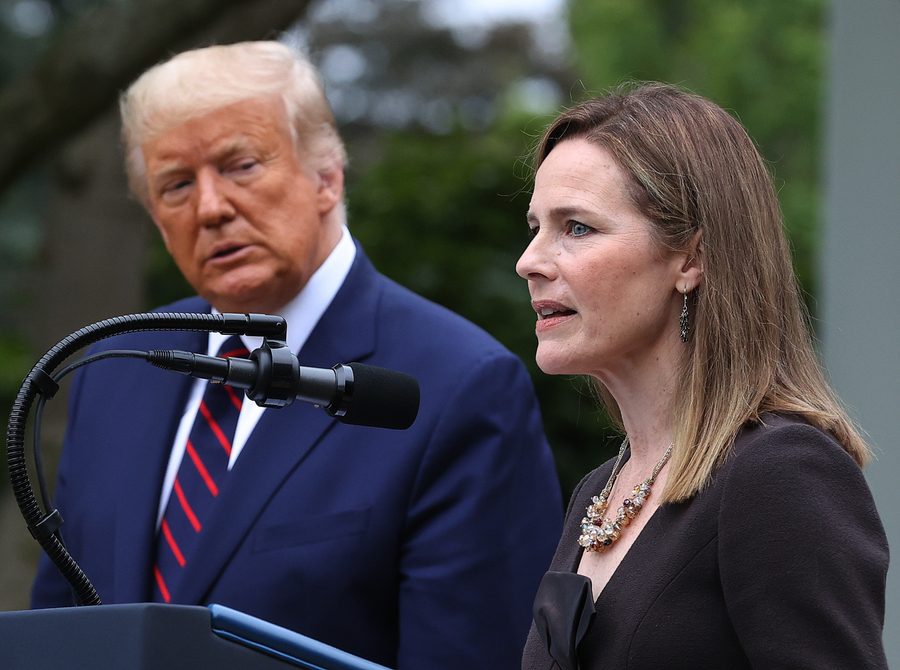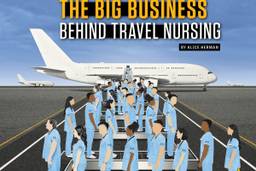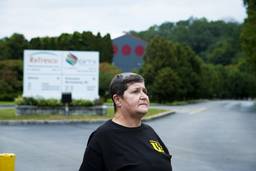How Amy Coney Barrett's Appointment Would Escalate the War on Workers
A conversation with labor activist and legal scholar James Gray Pope.
Alice Herman

The death of Supreme Court Justice Ruth Bader Ginsberg has triggered a hasty search by President Donald Trump and Senate Republicans for a justice to fill the empty seat before the November presidential election.
Now Trump has chosen Amy Coney Barrett, of the two women at the top of his shortlist, as his Supreme Court nomination, but she has not yet been confirmed. Barrett, a staunch conservative groomed by the Federalist Society, has been identified as a strongly anti-abortion nominee.
In employment cases that Barrett has seen, she has adopted largely anti-worker — and on two occasions, racially discriminatory — positions. In 2017, Barrett voted not to re-hear U.S. Equal Employment Opportunity Commission v. Autozone, in which a three-judge panel ruled in favor of an Autozone which had segregated its stores based on race. In a 2019 case, she ruled against a Black Illinois Department of Transportation worker who had alleged that his firing was racially-motivated, given racist verbal harassment he experienced on the job. And this year, Barrett ruled that GrubHub drivers could not file a class action lawsuit against their employer — a blow to workers in the rapidly expanding gig economy.
If appointed, Barrett would cement the conservative majority on a court that has already demonstrated a strong anti-worker tendency. In two major labor cases in the last three years the Supreme Court ruled 5-4 to curb union and worker protections. In Epic System Corp. v. Lewis, the Supreme Court determined that employers could contractually obligate workers to forgo their right to collectively sue the employer — before the decision, class action lawsuits were regarded as “protected concerted activity” under Section 7 of the NLRA. And in Janus v. AFSCME, the court ruled that public-sector unions could no longer require represented workers to pay union fees, again voting along conservative-liberal lines.
In These Times spoke to James Gray Pope, a labor activist and legal scholar from Rutgers University, about the conservative court and labor.
In These Times: What kinds of labor litigation do you anticipate coming before the court? And what are the implications for labor when the court becomes so overwhelmingly conservative?
James Gray Pope: The big-picture point here is that throughout the whole range of issues that affect the working class, the Supreme Court is going to be in a fundamentally reactionary posture. And we’ve been through a period like that, the so-called Lochner era, which refers to the late 19th and early 20th century Supreme Court trend of opposing legal regulations around working conditions. The Lochner case itself involved a New York maximum hours law that the court struck down because it violated the individual freedom of contract of employers and workers to agree that the worker would work for any number of hours that they wanted. And the court said it was illegitimate for a legislature to take into account imbalances of power in a contractual relationship, unless the protected individuals were somehow incapable of taking care of themselves, like children. So, that being the basic ideological center-point for jurisprudence during that period, the court did a lot of intervention in terms of striking down worker-protective legislation, maximum-hours laws, minimum -age laws, union-rights laws, and laws outlawing yellow dog contracts.
And this period today is similar. The core ideology is really the same, but the court can’t implement it with the kind of purity that it could implement it during the Lochner era, because labor statues are sitting there. The statement of purpose of the National Labor Relations Act (NLRA) talks about inequality, bargaining power, and the need for full freedom of association of workers. So they have to deal with that.
But you can see it in Epic Systems. You can see right from the beginning of the opinion, Justice Neil Gorsuch is irritated at the workers there for bringing a suit against their employer after they had agreed not to. So the idea here is that an individual worker, you know, sits down with an employer and is in an equal relationship in negotiating something. Whereas, of course, as Justice Ruth Bader Ginsburg says, in footnote two of her opinion, it didn’t happen that way. The company just sends out an edict saying, “You either agree to this or you lose your job.” That’s the present-day version of the Lochner era, individual liberty of contract.
In These Times: Beyond cases that deal directly with the NLRA, what is the kind of litigation that could come before the Supreme Court that would affect workers?
James Gray Pope: I don’t think anything’s going to be so much different from the recent direction. It’s just that it’s going to be more intense and consistent. What’s going to be an issue here in terms of what the court does, I think, is the extent to which Supreme Court Justice John Roberts, who has some sense of history and some concern about what the historical verdict on his chief justiceship is going to be, is going to constrain the court in the labor law area. I think he understands the need to constrain the court in the civil rights area, and even some of the other conservative justices have issued surprising pro-civil rights opinions.
The Supreme Court is like any political body in the sense that you spend political capital, and there’s an assessment: “Well, do we want to spend our political capital on this issue? Are we going to spend it on that issue?” And that’s going to be the big question now that they’re going to have. If this nominee gets confirmed, conservatives are going to have a very strong majority. And they’re going to have the power to transform the law immensely. And so the question is, where are they going to put their energy? And my fear is not so much for labor law, because labor laws are fundamentally weak anyway, but more in the area of voting rights and gerrymandering.
In These Times: How does the Federalist Society’s textualist or originalist tradition affect rulings on labor-related cases?
James Gray Pope: Originalism initially was a purely conservative philosophy where basically you imagine setting a time machine back and asking the people who enacted the 14th Amendment, for example, “Well, did you intend to give women equal rights to men?” And that was the kind of methodology that’s now referred to by more sophisticated proponents of original meaning as “original expected application,” where instead of going after the original meaning you’re going back and you’re going after the ways in which people in that historical era would have applied the provision.
One of the big problems with originalism is, what happens if a body of precedent builds up that seems to contradict your view? In a way, the most dramatic illustration is Supreme Court Justice Clarence Thomas on the scope of the Commerce Clause. And this relates to labor. Thomas thinks that the word “commerce” is the Congress’s power to regulate interstate commerce, the word commerce just means the buying and selling of things. And so, in his view, the decisions that upheld the Wagner Act and the National Labor Relations Act are wrong from an originalist point of view.
Well, the problem is that stare decisis—a judicial policy that courts generally follow earlier rulings (precedent), sometimes even when the earlier rulings were erroneous — is totally manipulable: It’s a multi factor analysis that’s easily manipulable.
In These Times: Considering the fact that labor law in the United States is really weak, and workers’ protections will likely be further eroded in the coming years, what are the ways that you might anticipate unions or workers organizations responding to that landscape, through the law or not?
James Gray Pope: Broadly, I would say that politics are key. And what’s really crucial is to get strong progressives into elected office, from which point they can pack the court. So if you want it to go through formal legal method mechanisms, that would be the way to do it. And obviously, that’s an area that’s fraught right now with the gerrymandering opinion, the voter ID rulings, and Citizens United guaranteeing the right of money to skew the political process. All of those things are going to make it very difficult to break through.
The last time this was a problem was around the Lochner era, during which a lot of people were denied the right to vote, including not only African Americans in the South, but also poor whites in the South, and women. So the democratic process was skewed then as well. Ultimately, what was crucial was mass resistance.
And the strikes in 1934 — that was the period where you had general strikes and threatened general strikes in a number of cities, bringing about the perceived possibility of, if not revolution, something at least threatening the order. And that got the NLRA passed. And in my opinion, that’s what got the NLRA upheld as constitutional along with President Franklin Delano Roosevelt’s threat to pack the Supreme Court with justices sympathetic to the New Deal.
Alice Herman is a journalist covering politics and labor in the Midwest. She is a contributing reporter at the Guardian US and a former investigative reporting fellow with In These Times.








